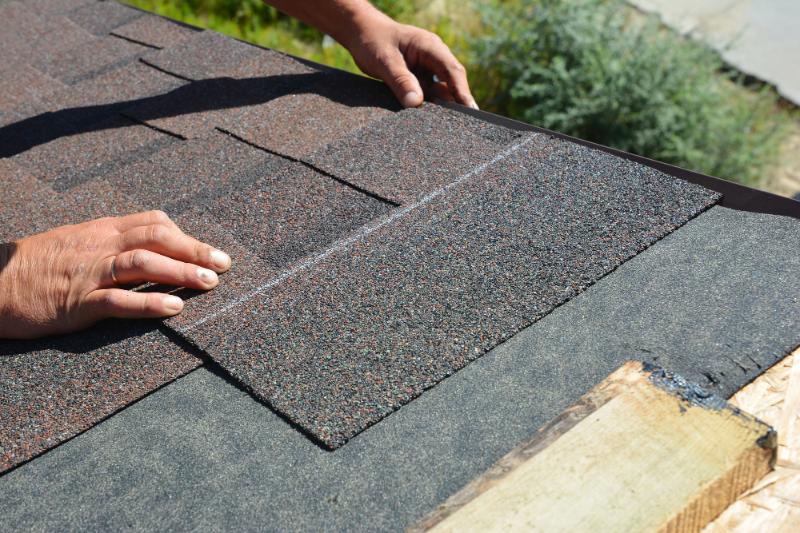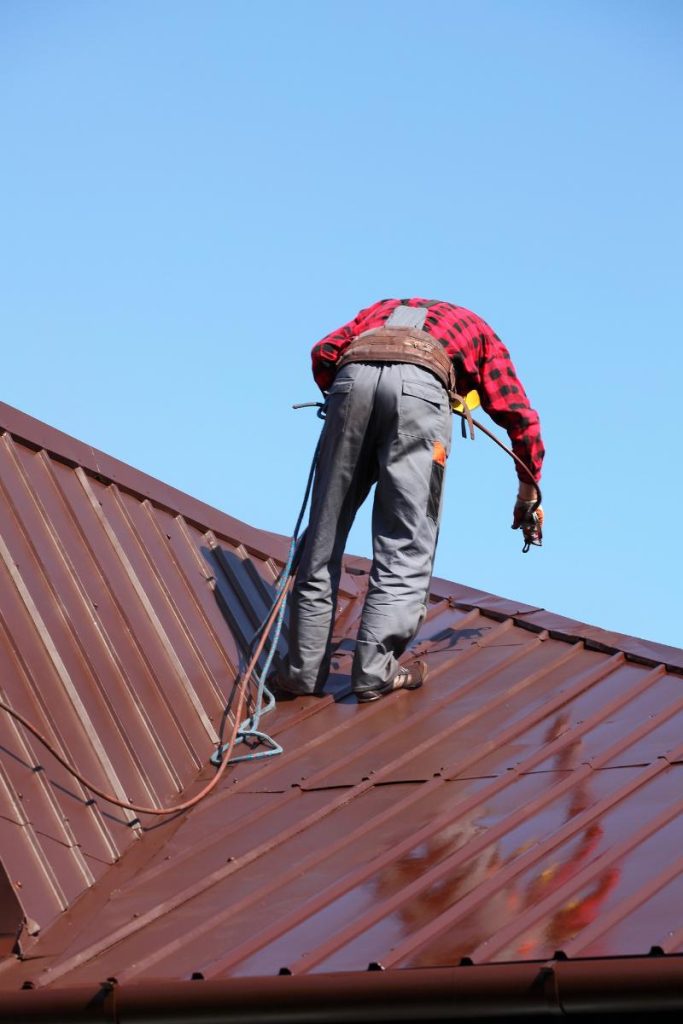As the summer sun blazes down, it’s not just the beachgoers who feel the heat; your roof does too. While it’s designed to withstand the elements, excessive heat can test its limits in ways you might not expect. Understanding these impacts can help you, as a homeowner, take proactive measures to protect your home.
Here’s a look at some surprising ways heat can affect your roof, starting with the common but often overlooked issue of shingle deterioration.

1. Shingle Deterioration
The most visible sign of heat damage on a roof is often the state of its shingles. Designed to protect and seal the roof, shingles can succumb to the relentless assault of the sun’s rays. Over time, excessive heat can lead to what industry experts call thermal degradation. This process involves the breakdown of the asphalt in shingles, causing them to become brittle and lose their granules. The granules on shingles aren’t just for aesthetic appeal; they provide an essential layer of protection from UV radiation and physical abrasion.
As the temperature rises, shingles can expand and contract. This constant movement can create stress fractures and lead to warping or curling at the edges. Such deformities compromise the shingle’s ability to shed water effectively, leading to potential leaks and water damage inside the home. Moreover, once the protective granules fall off, the shingles are more susceptible to UV damage, accelerating their deterioration.
This breakdown process affects the roof’s functionality and longevity. A roof that might have lasted 20 years in a moderate climate could have its lifespan significantly reduced in more extreme temperatures. That’s why it’s important for homeowners in hot climates to regularly inspect their roofs or have a professional do it by by looking for a roof repair near me.
2. Thermal Shock
Thermal shock occurs when your roof undergoes rapid temperature changes, typically during hot days that shift to cooler nights. This sudden shift can can strain your roof. Roofing materials expand with heat and contract as they cool down. When this happens quickly and frequently, it leads to what’s known as thermal cycling, putting stress on the materials.
This stress is particularly tough on the bonds that hold roofing components together. Over time, the repeated expansion and contraction can cause materials to crack, warp, or become loose. Metal roofs, for instance, are susceptible to this phenomenon, as they expand and contract more than other materials. As the roof layers shift, they may no longer align perfectly, leaving gaps that water can seep through.
Managing thermal shock involves ensuring good ventilation across the roof to minimize temperature extremes and using materials that can withstand significant thermal movement. Regular inspections can also catch early signs of damage, allowing for repairs before issues escalate.
3. UV Damage
The sun’s ultraviolet (UV) rays are a relentless force, particularly during the peak of summer. UV radiation steadily breaks down the chemical bonds in roofing materials, leading to deterioration and weakening over time.
For roofs, UV damage manifests as discoloration, loss of material flexibility, and an overall breakdown of the roof surface. Materials like asphalt shingles can lose their granules (as mentioned earlier), while wood shakes may split and become brittle. Even materials that are considered more durable, like certain types of synthetic roofing, can degrade under constant UV exposure, losing their color and structural integrity.
Preventing UV damage is all about the choice of materials and proper maintenance. Roofing products that are UV-resistant or covered with UV-reflective coatings can significantly reduce the rate of degradation. Regular maintenance, like cleaning and applying protective sealants, can also extend the life of the roof by reducing the impact of UV rays.

4. Increased Moisture Damage Risk
Heat can worsen moisture problems on a roof, leading to a range of complications. When the temperature rises, any moisture trapped within the roof’s structure or materials can expand. This expansion can weaken roofing components and create an environment for mold and algae growth, which can further degrade roofing materials over time.
During hot weather, the difference in temperature between the outside and the inside of a building can also lead to condensation, particularly if the attic lacks adequate ventilation. This condensation contributes to increased moisture levels, promoting rot in wooden structures and rust in metal components. Over time, this moisture accumulation can compromise the structural integrity of the roof, leading to costly repairs or replacement.
To reduce these risks, make sure you have proper roof ventilation and fix leaks promptly. Identify potential moisture issues early, allowing for timely interventions such as improving ventilation, installing vapor barriers, or repairing compromised areas to prevent water infiltration.
5. Compromised Insulation and Ventilation
Prolonged exposure to high temperatures can also impact the roof’s insulation and ventilation systems, key components in maintaining a home’s energy efficiency and structural integrity. Poor ventilation can lead to an accumulation of heat in the attic or under the roof, creating a “heat island” effect that not only increases the cooling load on a building but can also accelerate the deterioration of roofing materials.
The efficiency of insulation can be compromised by high attic temperatures, as insulation materials lose effectiveness when subjected to excessive heat. This can lead to a vicious cycle: compromised insulation causes higher indoor temperatures, leading to increased use of air conditioning, which in turn raises energy costs and puts additional strain on the roofing materials due to the cooling equipment’s exhaust.
Ensuring good roof ventilation is key to avoid these issues. Proper ventilation allows hot air to escape from the attic or roofing structure, reducing the temperature differential between the outside and inside. This can prevent the buildup of heat and moisture, protecting both the roof structure and the interior insulation. Upgrading to heat-resistant insulation materials and reflective roofing surfaces can also help maintain lower temperatures, further protecting the roof’s integrity and enhancing overall energy efficiency.
Addressing the impact of heat on your roof requires a proactive approach, blending regular maintenance with strategic upgrades. By understanding the nuanced ways heat interacts with roofing materials, you can make informed decisions that extend the lifespan of your roof and improve your home’s energy efficiency.
